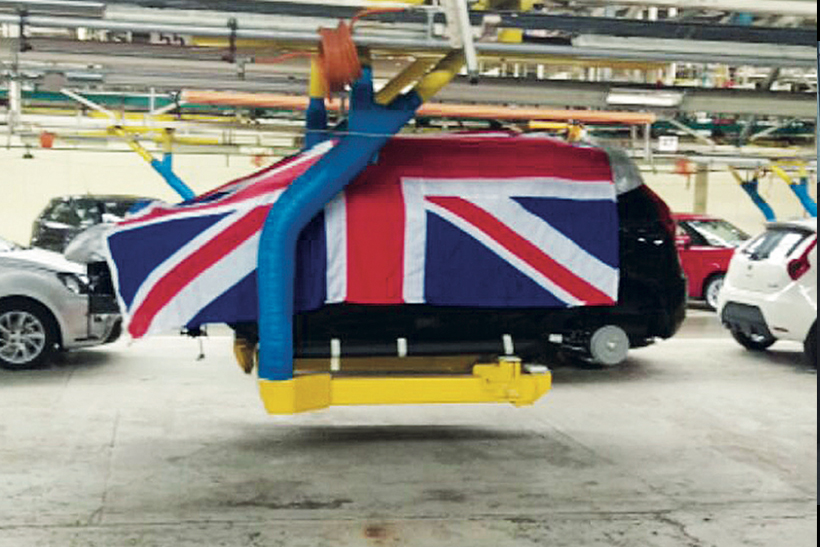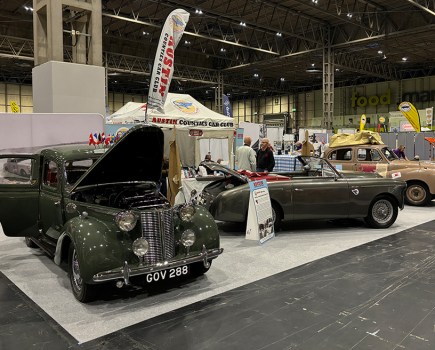First in, last out? As MG Motor UK posts record sales figures for 2016 and a new round of engineering apprentices enter Longbridge, Classics Worlds has learned that historic buildings, once the home of The Austin Motor Company, could be earmarked for destruction.
Still home to MG Motor UK and SAIC Motor UK Technical Centre (SMTC UK), cars are sold, engineered and tested in a small section of Longbridge, steadily redeveloped since the closure of MG Rover in 2005. Housing, shopping centres and a sixth-form college occupy most of the land once used for car production; now, sources believe more historic buildings are at risk.
In the early 2000s, to shore up its finances the ‘Phoenix Four’ consortium sold the freehold of Longbridge to property firm St Modwen. Since then, its successors have rented the buildings needed to continue – and as car assembly ceased last year, insiders became aware of an increasing number of unwanted historical structures being emptied.
We were made aware that ‘The Kremlin’, the former Austin, Rover Group and MG Rover administrative offices, was stripped out in November. Some staff moved to the Sales Centre, others went into offices into or near CAB 1. Unconfirmed sources said many historic artefacts were taken from the ‘Kremlin’ and dumped in skips.
MG’s Conference Centre houses Herbert Austin’s rebuilt office, a private collection of significant cars (including the five millionth Rover built – a 75 saloon) and several key Rover Group and MG Rover prototypes; at time of going to press our sources assured us that these cars, items and artefacts were safe. British Motor Corporation counterpart William Morris’ office remains on display at the British Motor Museum (formerly Heritage Motor Centre) in Gaydon.
MG’s Sales Centre, formerly Harris Mann’s styling studio, and better known as the ‘Elephant House’ remains intact and open for business. Aware of the demolition crews on-site, former director of purchasing and supplies at DeLorean Motor Cars, Barrie Wills, suggested that Historic England save the ‘Kremlin’ for posterity. Commenting on the previous sale of Longbridge land on the AROnline Facebook group, Barrie rued: “Another near criminal act by The Phoenix Four. The ‘Kremlin’ frontage should have been listed years ago.” When contacted, Historic England confirmed that neither the ‘Kremlin’ nor the ‘Elephant House’ were currently listed, despite rumours of the latter having attained this status.
An unnamed insider recently visited Longbridge and noticed the Austin Drawing Offices had been knocked down – “but a lot was going on at the rear of the site – there were Chinese delegates everywhere, and more was coming in than was being taken out,” they noted.
When approached for a statement about MG and SAIC’s future at Longbridge, a St Modwen spokesperson explained: “Shanghai Automotive (SAIC) remains a long-standing tenant at Longbridge on a 22-year lease. We are in regular contact with the car manufacturer who has confirmed that its marketing, sales and aftersales operations will remain at the plant.”
MG Motor UK and SAIC were unavailable for comment at the time we went to press.
At time of writing, the MG Sales Centre in the ‘Elephant House’, the Conference Centre and SAIC Motor UK Technical Centre engineering buildings are staying put. According to our sources, a tiny section of Car Assembly Building 1 (CAB 1) remains in use as offices.
As the chatter on social media increased, we spoke to a Longbridge employee who wished to remain anonymous, in the hope of establishing what was staying and what was going. They confirmed that Car Assembly Building 2 (CAB 2), its offices and adjacent paint shops were in the process “of being cleared and handed back to St Modwen.”
Finished in 1961, CAB 2 produced its first car, an Austin A40, a year later. The Rover Group used CAB2 for its niche models: Bodies for Rover 100 and 200 cabriolets, and later the MGF and TF, would arrive in tunnels from the now demolished ‘West Works’ for finishing.
Had later plans to produce the MINI (R50) come to fruition, CAB 2 would have assembled these cars; then owner BMW got as far as upgrading CAB 2’s paint shops and spray booths along with some assembly line work before the whole concern was transferred to Cowley (now MINI Plant Oxford). CAB 2 finished its life under MG Rover as a storage facility; shortly before the firm closed, a few HHR (45) and MGTF bodies came down the line – and stayed there until early 2017, frozen in time. According to our anonymous staff member, CAB
2 is now empty. They added: “There really wasn’t much left inside apart from unfinished 45 and MGTF shells, [which were subsequently removed]. Despite what you’ve heard [about the ‘Kremlin’], important documents and items have been saved.”








